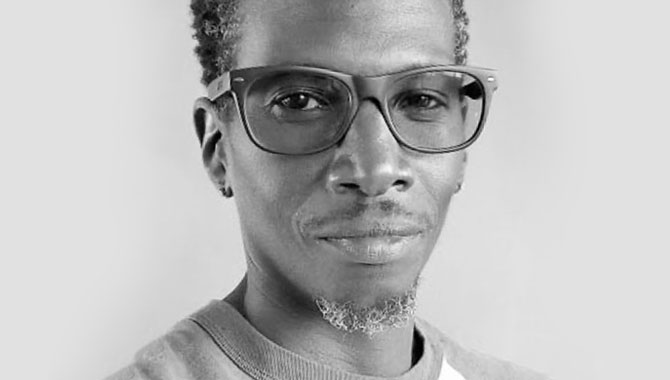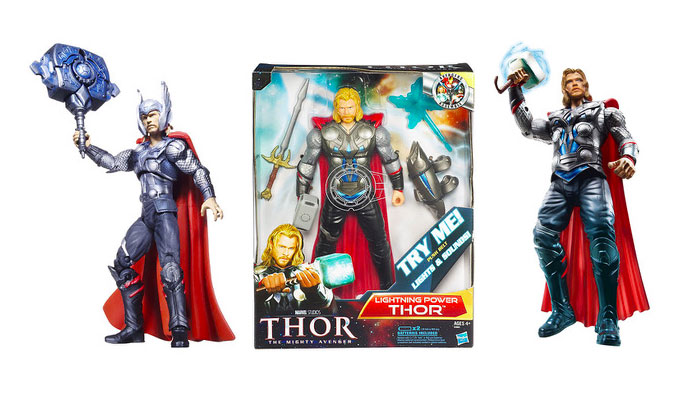—-
To stay in the loop with the latest features, news and interviews from the creative community around licensing, sign up to our weekly newsletter here

We caught up with David to find out more about his approach to toy design – and what a brand needs to be successful in the action figure space.
A prolific figure in the world of toys and action figures, David Vonner has worked at the biggest toy firms in the world, on some of the biggest brands around.
From designing KISS products at Spencer Gifts to working on the Marvel Legends line at ToyBiz, David also created successful lines at Hasbro, Spin Master and, most recently, at Mattel as Design Manager for WWE. He also appeared in the recent Disney+ series Marvel’s 616, discussing his work bringing Marvel characters to life for the toy industry.
Now working as an independent creative in the form of Vonner Studios, we caught up with David to find out more about his approach to toy design – and what a brand needs to be successful in the action figure space.

Hi David, welcome to Brands Untapped. As a toy designer, you’ve worked on some huge brands like Marvel and WWE – what’s the key thing for a brand needs to succeed in toys?
It’s all about the experience. When I was a kid, Evel Knievel was the man! He was the master of marketing and branding. What made it magical was the experience – he would jump over cars and trucks. People tuned in to see the train wreck, and even though there were train wrecks, sometimes he made it and it was amazing. Then the toys came out, and now kids could become Evel Knieval and make the landings. It was an amazing experience and an amazing performer, and that was a perfect platform to launch great products.

My equivalent would be Toy Story. I was the perfect age for that and had all the toys, to recreate that experience.
Toy Story is the perfect example. Toys coming to life is something all kids think about.
Look at something like Spider-Man… Back when I was at Hasbro, we started doing pre-school product for Spider-Man. There is a built-in awareness of who Spider-Man is for some kids aged six months old! It’s because of the primary colours, but also because of what he does. They all can crawl like he can and they all want to go on adventures.
It’s the same with WWE, which I worked on at Mattel. Kids can instantly mimic on their bed what they see with wrestlers on TV. If you understand the experience that underpins a brand, then you can design great products for it.
When you were designing action figures for Spider-Man or WWE, what would be the first thing you’d do to connect with those brands?
The first thing I’d do is engage with them in the same way as I would do if I was a kid. As an adult, we sometimes block imagination. You look at those kinds of brands and think about how unreal they are and apply logic to things that are illogical… Whereas kids never do that! They’re just blown away by the illogical.
Look at the trick where you pull a coin out of a kid’s ear. They know there wasn’t a coin in their ear before, yet when you pull it out, they’re amazed! So whenever any brand is dropped on my desk, I don’t ask whether it makes sense. I approach it with a blank slate and an open mind. On the surface I might not feel it, but by engaging with the content on that level, you can get into it and the innovation creeps in.
One of the things that I used to always do, was grab a bucket of popcorn and watch the movie of the brand I’m designing for. I’d try and watch it in the same way I would do in my bedroom. If people are in an office setting, they sometimes approach design in that corporate way. Back when I was at ToyBiz, we’d lounge around like the office was our bedroom. We’d lay on the floor, eat pizza and draw! We created an atmosphere that let us tap into the audience we were designing for.
Does it help being a fan of the brand when designing for it?
I’m a fan of cinema – it’s not helpful to break it down into smaller chunks than that. If you look at the story of Batman, it’s a tragic Shakespearean tale. There are people out there that think they’d hate Shakespeare, but they love the tragedy of Batman. Same with people that aren’t into the Bible but love Superman – it’s essentially the tale of Moses!
We have tales that have been with us for hundreds and thousands of years. It’s about presenting it a new way and innovating. There’s plenty of excavations that unearth old toys that really aren’t all that different to what kids play with now! The core essence of who we are has not changed.
You worked on the first line of Marvel action figures back at ToyBiz, when the company has bought Marvel. What was the brand like back then, and did you ever think it would grow into what Marvel is today?
On that team we had Jesse Falcone – who is the creator of the Marvel Legends action figure brand – and Damon Nee – who created the Spider-Man Classics line.
Jesse loved cinema. He would bring in old movies on tapes and we would watch them, and they would be horrible! But there would be nuggets of gold in there. One example was a bootleg copy of Roger Corman’s The Fantastic Four. As cheesy as it is, it was a stroke of genius! If you look at all the old Marvel stuff – the Spider-Man TV show, the ill-fated Doctor Strange movie, David Hasselhoff’s Nick Fury – they have the cheesiness of the time, but they were still Marvel and they all had elements of genius.
Damon was the visual spark plug, and an amazing artist. His ability to visually communicate, along with business mind was just amazing to be a part of. A comic book fan and lover of sequential art, Damon really understood the bridge between comics, art, entertainment and the growing importance of having Marvel be an evergreen brand by developing unique programs that catered to an even younger, pre-school audience with the introduction of Spider-Man & Friends. A main reason for Spider-Man’s product success is because of Damon Nee.
So, we knew Marvel could captivate audiences beyond cartoons or comic books, and we thought that if there were movies, they would be amazing. Stan Lee helped promote that by narrating The Incredible Hulk and Spider-Man and His Amazing Friends animated shows in the Eighties – it helped keep that authentic connection to the original comics. Marvel wouldn’t be where it is without Stan Lee, and his charisma.
In all your time designing action figures, is there one character in particular that stands out as one you loved working on?
Thor! He’s always been my favourite superhero, so when I got to work on toys for the Thor movie and watch Chris Hemsworth become the character I love, it was special. Thor isn’t like Superman or Batman or Spider-Man or one of the heroes that people immediately ‘get’. There was even some resistance at Hasbro about the character.
It was a dream come true to be a part of the whole experience and I even got to present Chris Hemsworth with the first toy that had ever been made with his likeness. He was freaked out! He said it was like holding a voodoo doll! His first toy line is something that I – as a Thor superfan – had a hand in, and that’s special. I put my heart and soul into making sure it was right.

Amazing. Is there a product that has your fingerprints on that really sums up your approach to toy design?
There isn’t one, because every experience is unique. Some things go smoothly, some things don’t. There were times we laughed, cried, argued – but we always came together because we all care so much about our craft and delivering the best for the fans – and for the shareholders!
When I first got into this career, I wanted to enjoy the ride. I’ve never known what’s coming next. It helps me retain the passion and love for it!
Before I let you go, what are you up to now?
What I’m up to now is a direct result of Covid – and the inevitable! I got laid off from Mattel right at the start of the pandemic.
The first time I ever got laid off, I thought it was unfair. “You’re just going to give me a box for my things and tell me to kick rocks? Are you serious?” But it’s what you sign up for when you work in this animal… The economy and retail landscape will have ups and downs and as I learned from a devasting lay-off at Hasbro, this is just part of the process when you work at major corporations – they expand and they contract with these highs and lows.
In a creative job, you wear a lot of hats. You could be brainstorming, then meeting with legal, then reading scripts, then working on packaging, then art directing – all kinds of stuff! So I thought why not lean into all of those different skill-sets, strengths and relationships, away from that structure? So now, if you want to collaborate, let’s do it and make something happen.
How can people reach out?
I’m so accessible! It’s @DavidVonner on Instagram, Facebook and Twitter, and my email is dvonner@gmail.com. Reach out!
To read more about David’s history in the toy industry, check out part two of the interview over on our sister-site, Mojo Nation, by clicking here.
Enter your details to receive Brands Untapped updates & news.